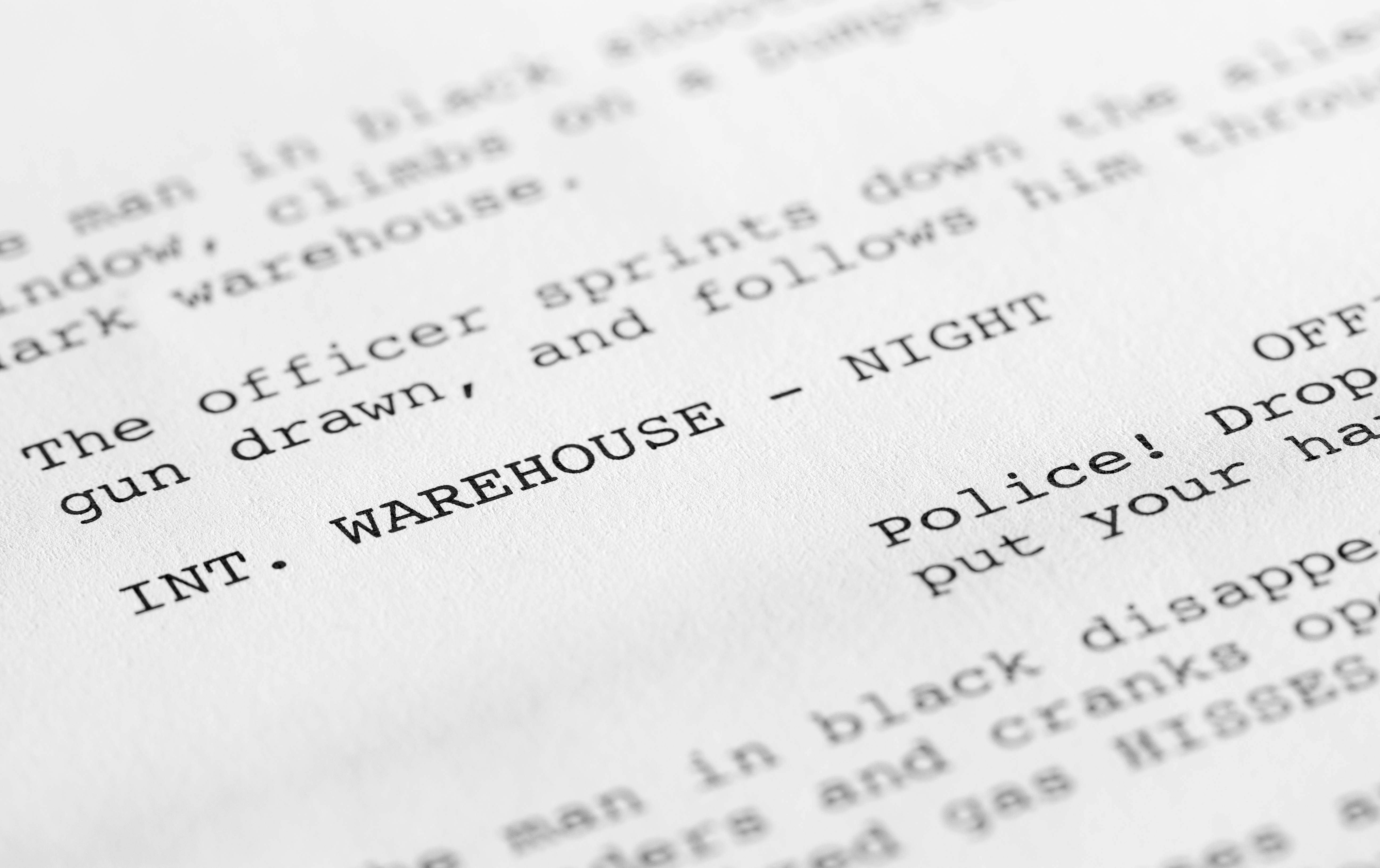Transitions: To "Cut To" or Not to "Cut To"
June 13, 2017
Transitions are appearing less and less in modern screenplays.
They can sometimes be used, but you should do so sparingly.
If you ever read an old screenplay, you’ll notice how densely written they are. Not only is the description more detailed (and, at times, borders on prose), you’ll find camera directions and all sorts of transitions. This was back in the day when screenwriters used typewriters and were usually former playwrights and novelists.
Today, thanks to screenwriting software, screenwriting has become egalitarian in nature. As a result, the contemporary screenwriter has streamlined the craft and has done away with much of the technical jargon. The priority is to convey a compelling and cinematic story as economically as possible. In this sense, the screenplay has become a feature-length pitch for a movie rather than the beat-for-beat blueprint it used to be.
This doesn’t mean you should jettison all traces of proper formatting. A script should still have scene headings, character names over the dialogue, and more or less resemble what a screenplay has always looked like. It should just be leaner and easier on the eyes. Anything that’s not essential to your storytelling isn’t required. Oftentimes, transitions fall under “not essential”.
When I first broke into the business, roughly 10 years ago, my scripts were filled with camera directions and superfluous transitions. This was because the only screenplays I had read were older ones. Thankfully, my calling-card script was considered strong enough that no one cared. It wasn’t until the aftermath of my first script sale that a producer said to me, “You don’t need all these CUT TO’s.”
“No CUT TO’s’!” my thoughts balked. Isn’t that the proper format? It’s included in all the screenwriting software as a formatting option!
The producer explained to me why they weren’t necessary: We’ve all seen movies; we know they cut from scene to scene. He was right: It is pretty standard editing to cut. Maybe back in the 1940s you had the WIPE TO or the IRIS IN or IRIS OUT, but short of a Star Wars film, most modern films just CUT TO each scene. If it’s understood that we’re cutting from one scene to the next, why take up an entire indented line with the phrase CUT TO? The producer also told me to read any contemporary script and I’ll find that no one was using CUT TO anymore. I took his advice and read a screenplay that had recently sold and, sure enough, he was right: not a single CUT TO.
Cool. I was thrilled to stop inserting CUT TO.
It saved a considerable amount of time and page space, and kept my flow from being disrupted.
The only reason to use a CUT TO is if you want to convey a sudden or abrupt visual change. This is where the SMASH CUT is best used. This is doing the job of the editor, but as I wrote in my last article about montage, sometimes it benefits you to make the script as visual and cinematic as possible. This doesn’t mean camera directions and a lot of technical jargon, but if you want to convey a succinct and forceful “BAM!”, a SMASH CUT will accomplish this goal.
A SMASH CUT or a regular CUT TO can also be useful when transitioning to a FLASHBACK. The DISSOLVE TO, and especially the RIPPLE DISSOLVE TO, are considered old-fashioned. If you take note, most modern films just cut when flash-backing or doing a dream sequence. All you need to do is convey that something different is happening on screen. You can even just write BEGIN FLASHBACK or DREAM SEQUENCE as a slug line. And then a simple BACK TO when you return to the main narrative.
A QUICK CUT is the same as a SMASH CUT. A JUMP CUT is a very specific editing technique popularized by French filmmaker Jean-Luc Godard in the 1960s; it’s when one scene cuts to the next scene in a choppy or seemingly haphazard fashion. Unless you’re doing a parody of the French New Wave or an MTV-style program, don’t jump. TIME CUT is a transition that pops up frequently in found footage scripts. It’s essentially the same thing as a jump cut, conveying an abrupt time shift in the footage. Some writers use MATCH CUT, which is when you’re making a visual parallel from one scene to the next. Like with all transitions, this should be used sparingly. Your job is to tell a story, not artistically frame shots.
Perhaps the most superfluous transition is FADE IN and FADE OUT.
Nothing screams “novice” more than reading FADE IN at the beginning of a spec script.
Think about it. What’s a FADE IN? It’s an antiquated technique used in old films. After the title cards, these films utilized a FADE IN for the opening shot. This is why it became a phrase commonly associated with screenwriting. What’s more evocative of the craft of screenwriting than a blank page in a typewriter with the words FADE IN at the top? Of course, no one uses typewriters anymore and films don’t FADE IN at the beginning.
Unless you’re watching Turner Movie Classics, it’s unlikely any movie you’re watching will use this technique. Editors stopped utilizing fades as soon as technology allowed them to make smoother transitions. Likewise, a screenwriter should use smooth, unobtrusive formatting. If films don’t FADE IN anymore, why would a screenwriter want to open a script this way? For the ceremony of it? The tradition? Well, you can also use a typewriter, live in a 1930s’-style bungalow, and wear a bow tie. Or you can choose to be a contemporary screenwriter and pen a contemporary script. And, in doing do, nix the FADE IN and FADE OUT.
Again, if you’re going for a certain aesthetic, all these transitions are available to you.But ask yourself first: Do I need this transition?
Does it convey what’s already implied without it?
Written by: Edwin Cannistraci
Edwin Cannistraci is a professional screenwriter. His comedy specs PIERRE PIERRE and O’GUNN both sold with more than one A-list actor and director attached. In addition, he’s successfully pitched feature scripts, TV pilots and has landed various assignment jobs for Universal, Warner Bros, Paramount and Disney.



